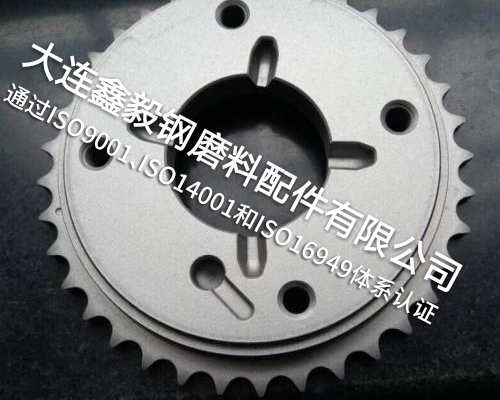Welcome to the official website of Dalian Xinyi steel abrasive parts Co., Ltd!
Dalian Xinyi steel abrasive parts Co., Ltd
Contact: Manager Zhang
Telephone: 0411-39630390
0411-39569620
mobile phone:13795133932
website:en.dlxyg.com.cn
Address: No. 10, Shengsheng Second Road, Dalian Economic and Technological Development Zone
Office worker: Quanshui P3, Ganjingzi District, Dalian
Dalian sandblasting processing, as an important surface treatment technology, has a wide range of application prospects. By selecting abrasives, equipment, and process parameters reasonably, efficient and precise surface treatment effects can be achieved. With the continuous advancement of technology, sandblasting processing will play a greater role in the future, providing strong technical support for the development of various industries.
Common abrasives include quartz sand, brown corundum, white corundum, silicon carbide, glass beads, etc. Different abrasives are suitable for different workpiece materials and processing requirements. For example, quartz sand is inexpensive and suitable for general rust removal and roughening treatment; Brown corundum has high hardness and good toughness, and is commonly used for sandblasting of metal materials such as stainless steel and alloy steel; Glass beads have a relatively soft texture and can be used for workpieces that require high surface roughness and do not want to produce excessive scratches, such as aluminum alloy products.
How to choose suitable parameters for Dalian sandblasting processing technology?
Choosing suitable sandblasting process parameters requires comprehensive consideration of various factors such as the material, shape, size, processing requirements, and abrasive properties of the workpiece. The following are some key parameter selection methods:
Abrasive selection
Material: For metal workpieces with high hardness, such as stainless steel and alloy steel, abrasives with high hardness and strong cutting ability, such as silicon carbide and brown corundum, can be selected; For metal or non-metal materials with low hardness, such as aluminum alloys, plastics, glass, etc., it is advisable to use relatively mild abrasives such as glass beads and plastic sand to avoid excessive surface damage.
Particle size: If you need to achieve high surface roughness and strong cleaning effect, you can choose abrasives with larger particle size, such as 8-16 mesh; To achieve lower surface roughness and better surface glossiness, fine-grained abrasives such as 100-200 mesh should be selected.
Sandblasting pressure
Workpiece material: Workpieces with high hardness and thickness, such as large steel components, can withstand high sandblasting pressure, generally between 0.5-0.8 MPa; For workpieces with low hardness and thin thickness, such as aluminum alloy sheets and plastic parts, the sandblasting pressure should be controlled at 0.2-0.4 MPa to prevent deformation or damage.
Processing requirements: To quickly remove thick oxide scale, rust and other impurities, a large sandblasting pressure is required; If only mild surface treatment or fine processing is carried out, lower pressure can meet the requirements.
Sandblasting distance
General range: Under normal circumstances, the sandblasting distance is between 100-300mm. For small and fine workpieces, the sandblasting distance can be appropriately shortened to 100-150mm to ensure the accuracy and effectiveness of sandblasting; For large workpieces or workpieces with low surface requirements, the sandblasting distance can be between 200-300mm, which can improve sandblasting efficiency.
Special circumstances: When using abrasive particles with large particle size or high sandblasting pressure, to avoid excessive sandblasting, the sandblasting distance can be appropriately increased; On the contrary, if the abrasive particle size is fine and the sandblasting pressure is low, the sandblasting distance can be shortened.
Spray gun angle
Conventional angle: Generally, the spray gun should be kept perpendicular to the surface of the workpiece, that is, the spray gun angle should be 90 °. This can ensure that the abrasive is evenly sprayed onto the surface of the workpiece, obtaining a uniform sandblasting effect, especially suitable for flat workpieces and situations that require high surface uniformity.
Special angle: For some workpieces with complex shapes, such as those with deep holes, grooves, and corners, in order to ensure that the abrasive can be fully sprayed onto these areas, it may be necessary to adjust the angle of the spray gun and perform sandblasting at a certain tilt angle. However, attention should be paid to controlling the angle and sandblasting time to prevent excessive sandblasting in certain areas.
Sandblasting time
According to the surface condition: if there are many impurities and thick oxide scale on the surface of the workpiece, a longer sandblasting time is required to meet the requirements of cleanliness and roughness; Workpieces with relatively clean surfaces and only requiring mild treatment have shorter sandblasting times. For example, surface treatment of new stainless steel workpieces may only take a few minutes, while steel workpieces that have been used for a long time and have severe surface corrosion may take more than ten minutes or even longer.
Combined with processing requirements: If a high surface roughness is required, the sandblasting time can be appropriately extended; If only simple surface cleaning and mild roughening treatment are carried out, the time should not be too long to avoid excessive surface processing. At the same time, the material and thickness of the workpiece should also be considered to avoid deformation or local thinning of the workpiece caused by long-term sandblasting.
Sandblasting equipment parameters
Nozzle diameter: Large diameter nozzles can provide greater abrasive flow rate and spray area, suitable for large-area sandblasting and high efficiency requirements; Small diameter nozzles can achieve more precise sandblasting and are suitable for processing small workpieces or fine parts. The common nozzle diameter is between 6-12mm, which can be selected according to the actual situation.
Air flow rate and pressure: The air flow rate and pressure provided by the air compressor should match the sandblasting pressure and abrasive flow rate. Generally speaking, the higher the sandblasting pressure, the greater the required air flow rate to ensure that the abrasive can be fully accelerated and sprayed onto the surface of the workpiece. At the same time, it is necessary to adjust the air flow rate and pressure parameters reasonably according to the specifications and performance of the sandblasting equipment to achieve better sandblasting effects.
The basic principle of sandblasting is to use compressed air or mechanical force to accelerate abrasive particles to high speed, and then spray them onto the surface of the workpiece. When abrasive particles impact the surface of a workpiece, they produce microscopic cutting effects, removing impurities such as oxide layers, rust, oil stains, and old coatings from the surface. At the same time, sandblasting can also change the microstructure of the workpiece surface, increase surface roughness or form uniform texture, thereby improving the adhesion or aesthetics of the workpiece.
In the manufacturing process of metal products, sandblasting is commonly used in the pre-treatment process, such as sandblasting the surface of the workpiece before electroplating, spraying, and welding, to improve the adhesion of the coating or weld. In addition, it can also be used for cleaning and refurbishing molds, removing residual substances on the surface of the mold, and restoring the surface accuracy and performance of the mold.

![]()
Office address: P3 Quanshui District, Ganjingzi District, Dalian
Factory address: No. 10, Shengsheng Second Road, Dalian Economic and Technological Development Zone
Copyright © http://en.dlxyg.com.cn/ 大连鑫毅钢磨料配件有限公司 Specializing inDalian sandblasting,Dalian shot blasting,Dalian blackened surface treatment,Welcome to inquire!
辽ICP备18004327号 Powered by Clouds platform Technical Support:Joint enterprise Era
 | Wechat scan Pay attention to our timely information |